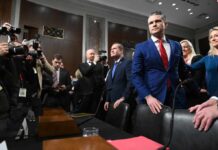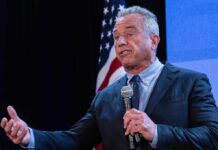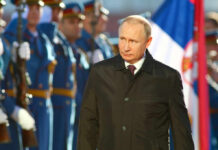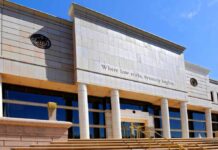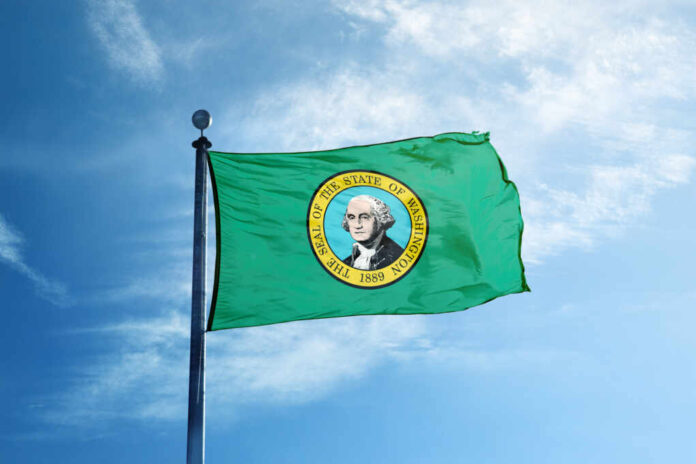
Washington State’s first hybrid-electric ferry has been delivered after a 22-month conversion, marking a milestone in the state’s ambitious plan to reduce emissions and modernize its aging fleet.
At a Glance
- The Wenatchee, Washington’s first hybrid-electric ferry, has completed its conversion and will soon return to the Bainbridge-Seattle route
- Governor Ferguson announced plans to restore full ferry service by summer while delaying some conversions until after World Cup 2026
- The Wenatchee is the largest U.S. ferry to adopt electric power, featuring 864 battery modules and new propulsion systems
- Washington aims to build 16 new hybrid-electric ferries and shift its entire fleet away from diesel power by 2050
- Terminal charging infrastructure is being developed throughout Puget Sound to support the electrified fleet
Milestone Achievement in Washington’s Ferry Electrification
After nearly two years of retrofitting work, Vigor Shipyard has delivered Washington State’s first hybrid-electric ferry to Washington State Ferries. The Wenatchee, which has been out of service for 22 months during its conversion, is now at the Eagle Harbor maintenance facility preparing for sea trials and crew training before returning to service on the busy Bainbridge-Seattle route. The vessel represents a significant achievement in Washington’s efforts to create a more sustainable marine transportation system, becoming the largest ferry in the United States to be converted to run on electric power.
The Wenatchee’s conversion included replacing two diesel generators with two battery rooms housing 864 battery modules, along with installing new propulsion and electrical systems. The vessel must still complete final preparations at Eagle Harbor, including comprehensive crew training and obtaining Coast Guard certification before it can return to service. This conversion is part of a $150 million contract awarded to Vigor for the conversion of three Washington State ferries to hybrid-electric power.
Balancing Service Restoration and Fleet Modernization
Governor Bob Ferguson recently announced a strategic plan to restore Washington State Ferries to full service by this summer, addressing ongoing service reliability issues that have plagued the system since the pandemic. The plan includes delaying the hybrid-electric conversion of two additional large ferries until after the 2026 World Cup to ensure adequate vessel availability during the international event. Washington’s ferry system requires 21 vessels to maintain full domestic service, with 18 operational at any given time.
“Washingtonians count on fast, reliable ferries to get to work and access critical services,” Ferguson said. “We must do everything we can to fully restore ferry service to pre-pandemic levels. This decision immediately improves customer service and centers the people.”
The governor has prioritized listening to ferry-dependent communities, recently meeting with Whidbey Island residents and planning similar discussions with San Juan Islands residents. These communities have been particularly affected by service disruptions and rely heavily on the ferry system for daily transportation needs. Additionally, the administration has elevated Steve Nevey, head of Washington State Ferries, to the position of Deputy Transportation Secretary to oversee the service restoration efforts.
Long-Term Vision for Fleet Electrification
Despite the temporary pause on some conversions, Washington remains committed to its long-term plan to shift the entire ferry fleet away from diesel power by 2050. The state has opened bids for the construction of five new 160-car hybrid-electric ferries, with proposals under evaluation from Eastern Shipbuilding Group and Nichols Brothers Boat Builders. The broader electrification plan includes building a total of 16 new hybrid-electric ferries and replacing 11 vessels by 2040.
“Governor Ferguson’s decision to delay these hybrid-electric conversions is the first step toward achieving a long-term vision for improved ferry service in Washington,” Deputy Transportation Secretary Steve Nevey said. “Our work is not done, but this puts us on track to fully restore and maintain service levels Washingtonians rely on. I look forward to continued work with the Governor, his senior staff and the Legislature to address our dual challenges of modernizing our fleet and supporting our hardworking crews.”
To support the new electric vessels, Washington State Ferries plans to install charging infrastructure at terminals throughout Puget Sound. Contract announcements for these charging systems are expected soon. The administration has also allocated over $26 million for ferry worker compensation increases to address staffing challenges that have contributed to service disruptions. These investments in workforce recruitment, retention, and training are critical components of the plan to stabilize the ferry system.




